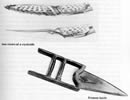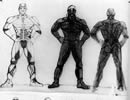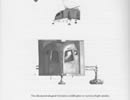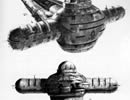The Design of Dune
Click on each image to bring up a larger version of it

Original Don Post Studios concept design for a Harkonnen helmet, accomplished in ink on a 9 ½ in. x 14 in. leaf of artist's vellum.
Noted at the lower right in black ink "Harkonnen Soldier Helmet Design II".
Sold for $200, 29 July 2005 by Profiles in History
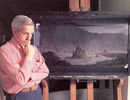
A pensive Albert Whitlock with his painting of the Arrakeen valley. Although he supervised each of the Dune matte shots, this was the only one personally executed by Whitlock.
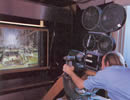
Camera and model rigger Lynn Ledgerwood checks the alignment on another Giedi Prime establishing shot, produced under the auspices of veteran matte artist Albert Whitlock, The painting - rendered by Syd Dutton - would later be enhanced with an array of live action and miniature elements.
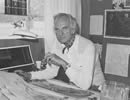
Veteran production designer Tony Masters was among the first to join Lynch's team, working closely with the director to conceptualize and then create the four divergent worlds of Dune.
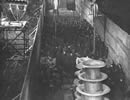
Hall of Rites: The partial live-action set - an exterior erected on the Churubusco backlot - was a narrow, open-roofed structure two hundred feet long, with an eighty-foot elevated platform at one end and ten-foot walls along the sides. The balance of the structure was achieved in matte paintings form by Albert Whitlock's unit.
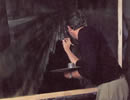
Syd Dutton - who worked on the paintings with Mark Whitlock - adds a finishing touch to one of the angles for the Hall of Rites matte.
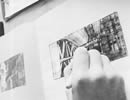
Richard Malzahn storyboards the Giedi Prime sequence.
Image/Caption courtesy of Eric Swenson
© 1983/84
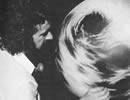
Model unit supervisor Brian Smithies dusts off the planet Caladan prior to shooting, The three-dimensional model was one element among many in the complex composite shot of the Atreides armada entering the Guild heighliner for its space-folding journey to Arrakis.
Image/Caption courtesy of Eric Swenson
© 1983/84



